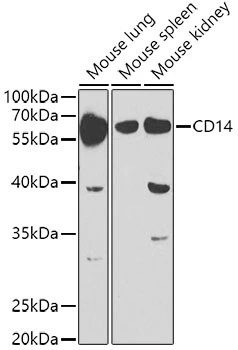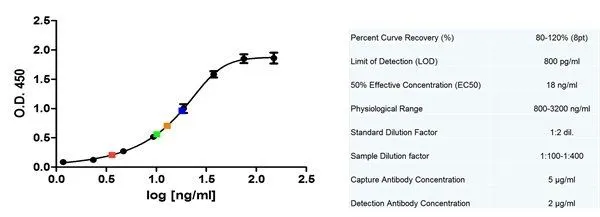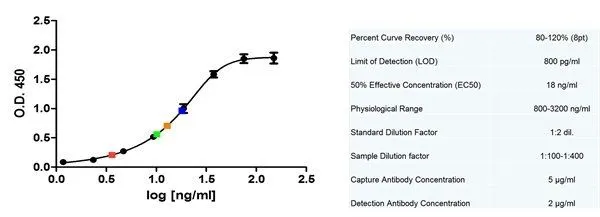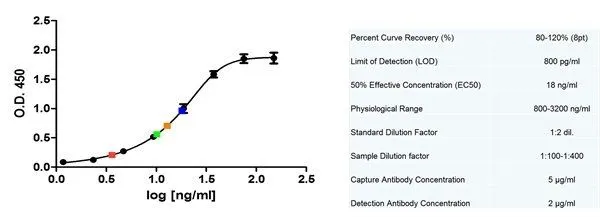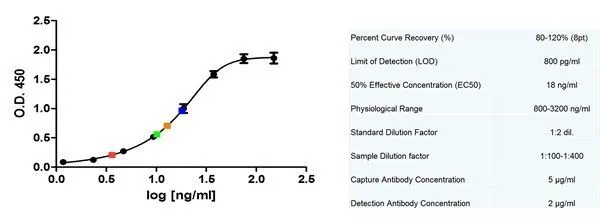
Sandwich ELISA analysis of Human CD14 binding using Mouse anti CD14 antibody, clone MEM-18 (GTX28103) as a capture reagent and biotinylated Mouse anti Human CD14 antibody, clone Tuk4(GTX42422) as a detection reagent. Serum samples diluted 1:200 and 1:400 are shown green and red respectively, while plasma samples also diluted 1:200 and 1:400 are blue and orange respectively
CD14 antibody [TUeK4] (Low endotoxin, azide free)
GTX42422
ApplicationsFlow Cytometry, Western Blot, ELISA, Neutralisation/Blocking
Product group Antibodies
TargetCD14
Overview
- SupplierGeneTex
- Product NameCD14 antibody [TUK4] (Low endotoxin, azide free)
- Delivery Days Customer9
- Application Supplier NoteFACS: 1/100-1/200. Neutralizing/Inhibition: . *Optimal dilutions/concentrations should be determined by the researcher.Not tested in other applications.
- ApplicationsFlow Cytometry, Western Blot, ELISA, Neutralisation/Blocking
- CertificationResearch Use Only
- ClonalityMonoclonal
- Clone IDTUeK4
- Concentration1 mg/ml
- ConjugateUnconjugated
- Gene ID929
- Target nameCD14
- Target descriptionCD14 molecule
- Target synonymsmonocyte differentiation antigen CD14; myeloid cell-specific leucine-rich glycoprotein
- HostMouse
- IsotypeIgG2a
- Protein IDP08571
- Protein NameMonocyte differentiation antigen CD14
- Scientific DescriptionThe protein encoded by this gene is a surface antigen that is preferentially expressed on monocytes/macrophages. It cooperates with other proteins to mediate the innate immune response to bacterial lipopolysaccharide. Alternative splicing results in multiple transcript variants encoding the same protein. [provided by RefSeq, Mar 2010]
- Storage Instruction-20°C or -80°C,2°C to 8°C
- UNSPSC12352203
References
- Intraoperative blood salvage may shorten the lifespan of red blood cells within 3 days postoperatively: A pilot study. Liao XY et al., 2017 Sep, Medicine (Baltimore)Read more


![WB analysis of various samples (non-reducing) using GTX28103 CD14 antibody [MEM-18]. Lane 1 : HEK 293 transfected with empty vector Lane 2 : tissue culture supernatant of HEK 293 transfected with human CD14 cDNA Lane 3 : HEK 293 transfected with human CD14](https://www.genetex.com/upload/website/prouct_img/normal/GTX28103/GTX28103_20191028_WB_1_w_23060722_523.webp)
